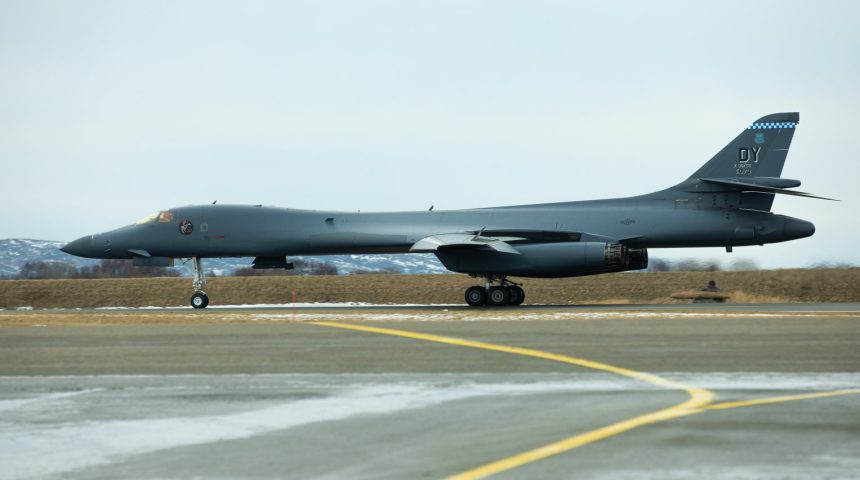The B-1B arrival marks the first time U.S. bombers have operated out of Norway.
Four U.S. Air Force B-1B Lancers from the 7th Bomb Wing at Dyess Air Force Base, Texas, have deployed to Norway, as part of a BTF (Bomber Task Force) mission. Flying as TABOO (some sources say SABU) flight and supported by tankers from Pease Air Force Base, New Hampshire, and RAF Mildenhall, UK, the B-1s have arrived at Ørland Air Force Station, Norway, an important air base operated by the Royal Norwegian Air Force. The air station is the home of the RNoAF F-35 MOB (Main Operating Base) and also hosts search and rescue helicopters and a FOL (Forward Operating Location) of the NATO E-3A AWACS fleet.
Looks like B-1s to Norway is happening with a likely flight of x4 B-1s (TABOO11 Flt). Three tankers (SPUR70 Flt) left Pease heading north for Canada to refuel the B-1s ready for the Atlantic crossing. SPUR71 remained at Pease. pic.twitter.com/ZWHipCfQfy
— Saint1 (@Saint1Mil) February 22, 2021
Noteworthy, as explained in the article published when the deployment was announced, while the strategic bomber missions have provided theater familiarization for aircrew members and opportunities for U.S. integration with NATO allies and regional partners since 2018, the deployment, marks the first time U.S. bombers operate out of Norway. Indeed, on May 20, 2020, two B-1B Lancers from the 28th Bomb Wing, Ellsworth Air Force Base, South Dakota, conducted a mission to the Nordic region. That mission, one in a series of long-range strategic Bomber Task Force missions to Europe, was worth of note for at least a couple of interesting details: first, it marked the first time B-1s flew over Sweden to integrate with Swedish Gripens while conducting close-air support training with Swedish Joint Terminal Attack Controller ground teams at Vidsel Range; second, the B-1s integrated with Royal Norwegian Air Force F-35s to fly tactical sorties and conduct a low-approach over Ørland Air Station, Norway, the home of the RoNAF’s recently operational F-35 fleet.
“I’m looking forward to showcasing our ability to operate out of this new location and get after the mission in fresh environments,” said Gen. Jeff Harrigian, U.S. Air Forces in Europe-Air Forces Africa commander, in a public release. “Training with allies like Norway enables us to hone our deterrence and defense capabilities while also enhancing regional stability.”
Upon arrival in Norway, all USAF personnel, who were screened prior to depart, will immediately practice a ten-day COVID-19 Restriction of Movement (ROM).
From Norway it is quite likely that the BONEs (from B-One – as the B-1s are dubbed by their aircrews) will launch multiple sorties over the Arctic Circle, a region with a significant strategic importance where Russian forces are also operating these days: for instance, the Northern Fleet’s missile cruiser “Marshal Ustinov” was sailing very close to Norway’s border outside Grense Jakobselv, as the B-1 arrived in Orland, the Barents Observer reported. Earlier this month, two Russian Tu-160 Blackjack strategic missile carriers performed a mission over the neutral waters of the Barents, Greenland and Norwegian seas.
In the meanwhile, the U.S. Air Force has just kicked off the plan to divest 17 B-1B aircraft from the current fleet of 62 Lancers, leaving 45 in the active fleet in accordance with the National Defense Authorization Act. The first aircraft flew to the “Boneyard” of the 309th AMARG (Aerospace Maintenance and Regeneration Group) at Davis-Monthan Air Force Base, Texas, on Feb. 17, 2021. Of the 17 B-1 aircraft, four will be required to remain in a reclaimable condition that is consistent with Type 2000 recallable storage: in other words, they can be resurrected (as for instance done with the B-52s) when needed.









